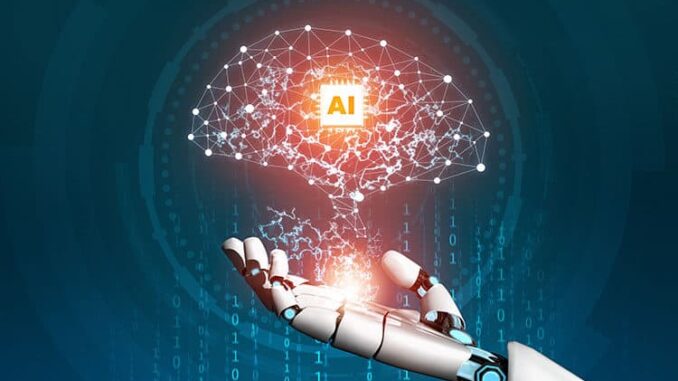
AI frameworks and tools are essential for developing, training, and deploying machine learning (ML) and artificial intelligence (AI) models.
Here’s an overview of some of the most popular frameworks and tools available as of my last knowledge update in October 2023:








### Machine Learning Frameworks
1. **TensorFlow**
– Developed by Google, TensorFlow is an open-source library for numerical computation and large-scale machine learning.
– It supports deep learning and provides flexible tools, libraries, and community resources.
– **Key Features:** Eager execution, TensorBoard for visualization, and TensorFlow Lite for mobile and IoT devices.
2. **PyTorch**
– Developed by Facebook, PyTorch is an open-source machine learning library that offers flexibility and speed.
– Known for its dynamic computation graph, it’s favored for research and development due to its intuitive interface.
– **Key Features:** Strong GPU support, easy debugging, and a rich ecosystem including TorchVision and Hugging Face for NLP.
3. **Scikit-Learn**
– A Python library that provides simple and efficient tools for data mining and data analysis.
– It is built on NumPy, SciPy, and Matplotlib and is widely used for classical machine learning algorithms.
– **Key Features:** User-friendly API, comprehensive documentation, and support for various data formats.
4. **Keras**
– Initially an independent library, Keras has been integrated into TensorFlow as `tf.keras`.
– It provides a high-level interface for building and training deep learning models.
– **Key Features:** Modular and user-friendly, ideal for fast prototyping.
5. **MXNet**
– An open-source deep learning framework that is highly scalable and designed for efficiency.
– It supports a wide range of languages including Python, R, Scala, and Julia.
– **Key Features:** Dynamic and symbolic programming, suitable for both academic research and production.
6. **Caffe**
– Developed by the Berkeley Vision and Learning Center (BVLC), Caffe is primarily used for image classification and convolutional network applications.
– Known for its speed and modularity.
– **Key Features:** Pre-trained models, a simple interface for image processing.
### Natural Language Processing (NLP) Frameworks
1. **spaCy**
– An open-source library for advanced NLP in Python, designed for performance and production use.
– It provides pre-trained models and supports common NLP tasks like tokenization, named entity recognition, and dependency parsing.
– **Key Features:** Efficient, user-friendly API, and integration with deep learning frameworks.
2. **Hugging Face Transformers**
– A library for natural language processing, providing pre-trained models for diverse NLP tasks using the Transformer architecture.
– Supports both PyTorch and TensorFlow, making model training and fine-tuning straightforward.
– **Key Features:** Wide availability of pre-trained models, user-friendly API, and extensive community support.
### Data Processing and Visualization Tools
1. **Pandas**
– A powerful data manipulation library for Python that provides data structures (like DataFrames) for efficiently storing and manipulating large datasets.
– **Key Features:** Data cleaning, transformation, and analysis capabilities.
2. **Matplotlib and Seaborn**
– Popular visualization libraries in Python. Matplotlib provides a variety of plotting options, while Seaborn is built on top of Matplotlib for more attractive statistical graphics.
– **Key Features:** Easy integration with Pandas, extensive plotting options.
3. **Dask**
– A flexible parallel computing library for analytics with parallel collections that extend Pandas and NumPy.
– Used for handling large datasets that don’t fit into memory.
– **Key Features:** Out-of-core computing, easy scalability.
### Deployment and Production Tools
1. **Docker**
– A platform for developing, shipping, and running applications in containers, ensuring consistency across multiple environments.
– **Key Features:** Portability, scalability, isolation of dependencies.
2. **TensorFlow Serving**
– A system for serving machine learning models in production environments.
– Supports multiple models, can handle different versions, and provides efficient REST APIs.
– **Key Features:** Designed for production use, easy to deploy TensorFlow models.
3. **MLflow**
– An open-source platform for managing the ML lifecycle, including experimentation, reproducibility, and deployment.
– **Key Features:** Tracking experiments, packaging code into reproducible runs, and deploying models.
4. **Kubeflow**
– A machine learning toolkit for Kubernetes that facilitates the deployment, monitoring, and management of ML workflows.
– **Key Features:** Scalability, portability, and flexibility in managing cloud-native ML workloads.
### Other Notable Tools
1. **OpenCV**
– An open-source computer vision library that provides a comprehensive suite of tools for image processing and analysis.
– **Key Features:** Real-time processing, extensive pre-built functions for image manipulation.
2. **Apache Spark**
– An open-source distributed computing system that provides an interface for programming entire clusters with implicit data parallelism and fault tolerance.
– Ideal for big data processing and machine learning with libraries like MLlib.
– **Key Features:** High performance for iterative algorithms, support for various programming languages.
### Conclusion
The AI landscape is constantly evolving, with new frameworks and tools regularly being developed to cater to various needs in the field of AI and machine learning. When choosing a framework or tool, it’s essential to consider factors such as the specific requirements of your project, ease of use, community support, and the nature of the tasks you intend to perform.
If you have specific interests or needs regarding AI frameworks and tools, feel free to ask!


Leave a Reply